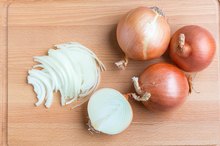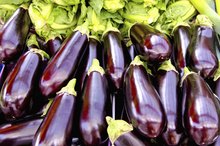Boiled Vegetables vs. Steamed
Eating the recommended amount of vegetables each day may lower your risk for heart disease, cancer, obesity and Type 2 diabetes due to the nutrients these foods contain. Use the wrong cooking method, however, and up to 50 percent of the vitamins and 15 percent of the minerals in your vegetables may be lost during cooking, according to ConsumerReports.org. Boiling may be a relatively quick and easy way to cook your vegetables, but in most cases you are better off steaming them.
Nutrient Retention
A study published in the "Journal of Zhejiang University SCIENCE B" in August 2009 found that steaming was the cooking method that resulted in the least loss of nutrients in broccoli, including vitamin C and beneficial plant chemicals called glucosinolates and chlorophyll. Although steaming didn't result in the loss of folate from broccoli or spinach, boiling caused losses of more than 50 percent in a study published in the "British Journal of Nutrition" in December 2002. Both boiling and steaming may increase the antioxidant content of vegetables, however, notes a study published in the "Journal of Agricultural and Food Chemistry" in January 2008, at least in part because cooking helps make these compounds more available to your body.
Anti-Nutrient Removal
Does Cooking Destroy the Phytochemicals in Broccoli & Cauliflower?
Learn More
Boiling's ability to leach substances out of food can sometimes be a good thing. People who get kidney stones may benefit from boiling vegetables that are high in oxalates, which is a substance often found in these stones. Boiling can remove up to 87 percent of the oxalates in vegetables, while steaming only removes up to 53 percent of these anti-nutrients, according to a study published in the "Journal of Agricultural and Food Chemistry" in April 2005. Vegetables high in oxalates include some green leafy vegetables, beets, sweet potatoes, okra, lentils and soybeans.
Texture and Palatability
Vegetables that have been steamed aren't just more nutritious than those that have been boiled, but they also taste better. A blind taste test showed that people prefer the taste, texture and flavor of vegetables that have been steamed over those that have been boiled, according to a study published in the "Journal of Human Nutrition and Dietetics" in February 2010.
Other Considerations
Steamed Vegetable Nutrition
Learn More
Other ways to limit nutrient losses during cooking include washing vegetables before you cut them instead of after, leaving the peel on, cutting them in large and uniformly-sized pieces and cooking them as soon as possible after you cut them, notes an article published on the Fine Cooking website. After steaming your vegetables, serve them with a small amount of fat, otherwise, you won't be able to absorb the fat-soluble vitamins A, D, E and K from your vegetables. Add a small amount of citrus to vegetables that contain iron, such as broccoli, kale or spinach, to help your body absorb this iron.
Related Articles
References
- Journal of Zhejiang University SCIENCE B: Effects of Different Cooking Methods on Health-Promoting Compounds of Broccoli
- Journal of Human Nutrition and Dietetics: Preferences for Steaming of Vegetables
- Journal of Agricultural and Food Chemistry: Effect of Different Cooking Methods on Vegetable Oxalate Content
- Consumer Reports: Get More Out of Your Vegetables
- Journal of Agricultural and Food Chemistry: Effects of Different Cooking Methods on Nutritional and Physicochemical Characteristics of Selected Vegetables
- British Journal of Nutrition: The Effect of Different Cooking Methods on Folate Retention in Various Foods That Are Amongst the Major Contributors to Folate Intake in the UK Diet
Writer Bio
Based in Massachusetts, Jessica Bruso has been writing since 2008. She holds a master of science degree in food policy and applied nutrition and a bachelor of arts degree in international relations, both from Tufts University.









